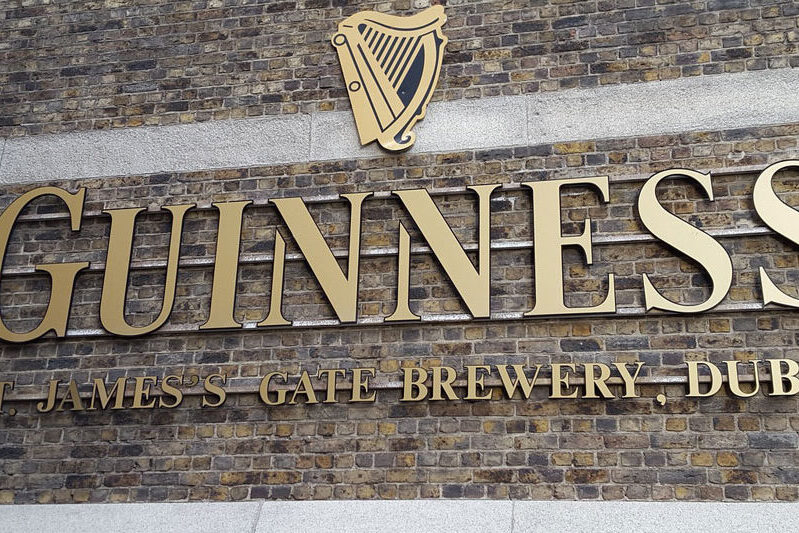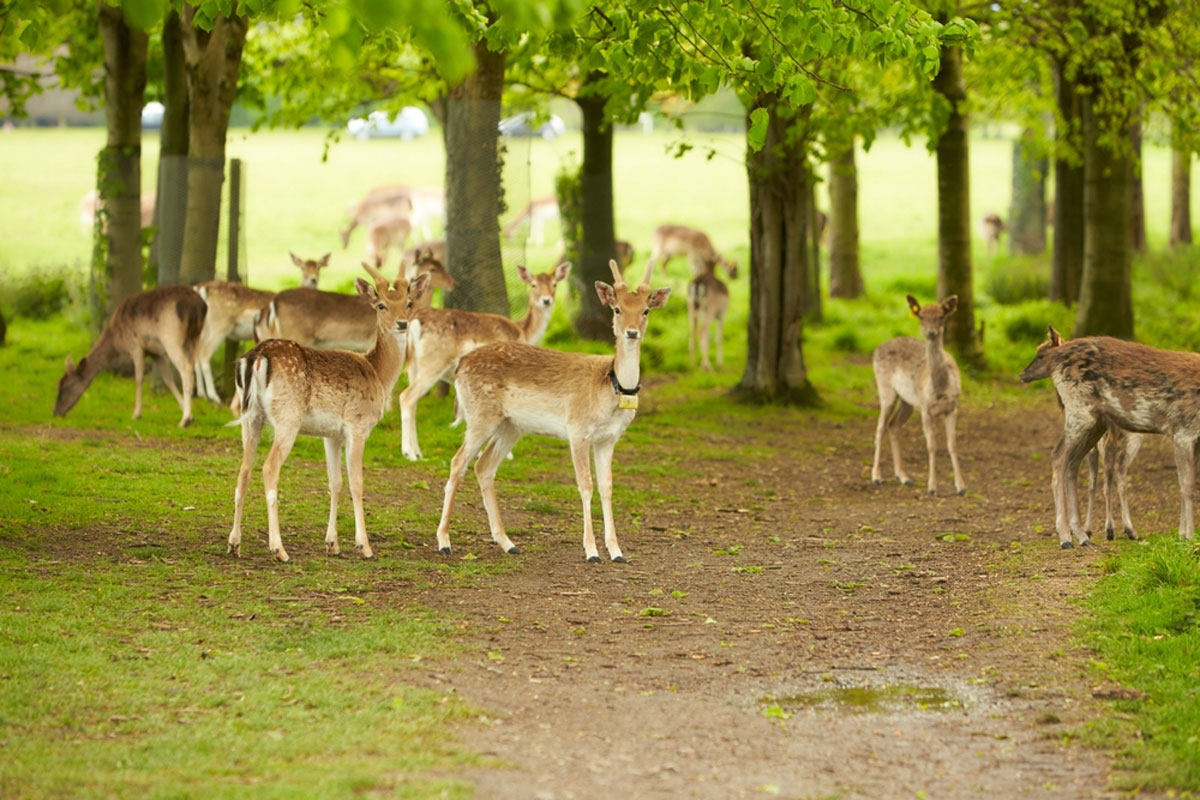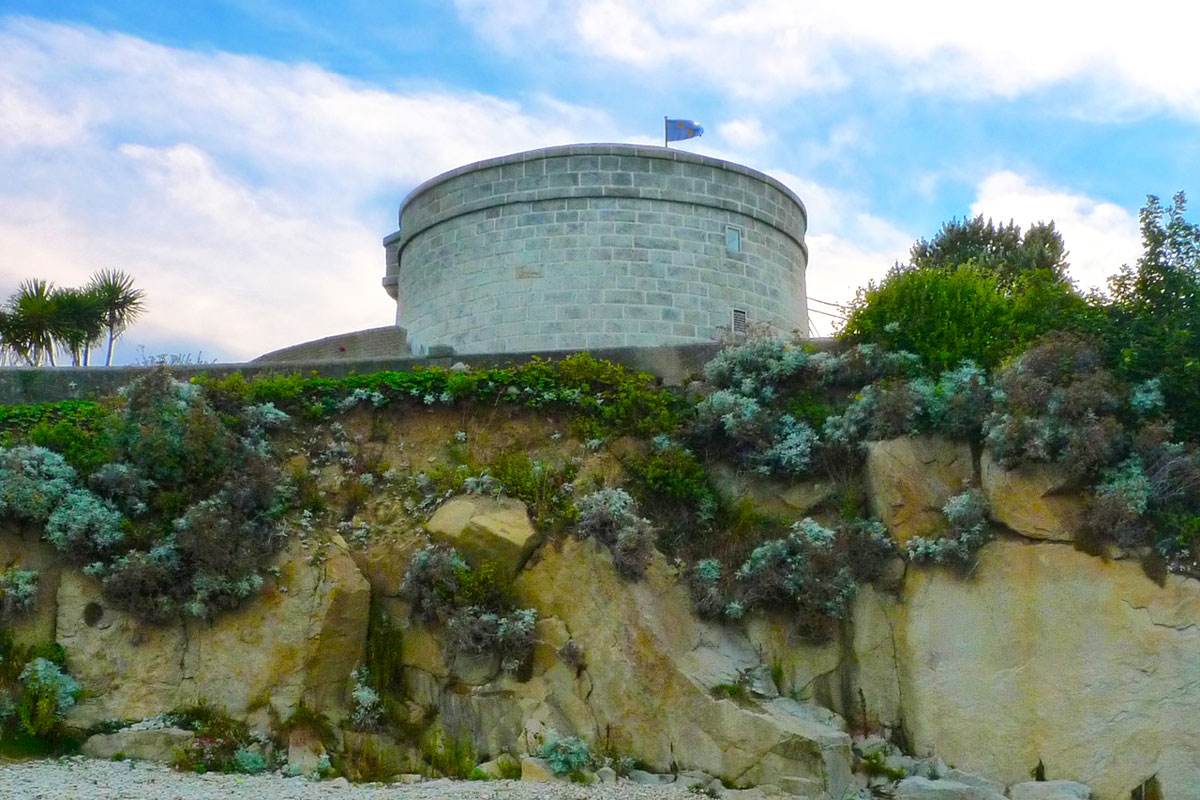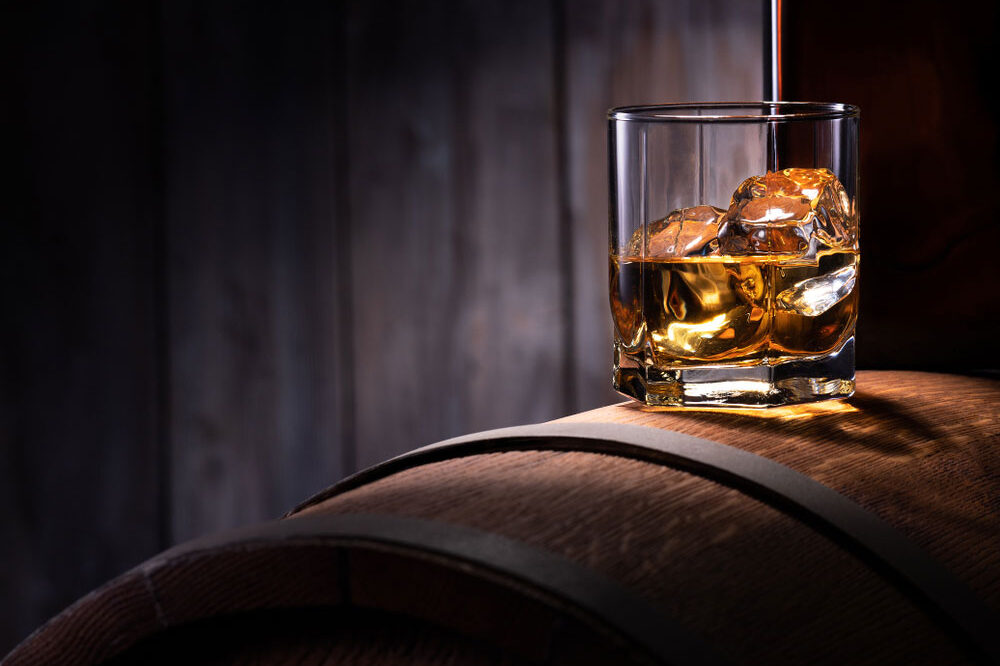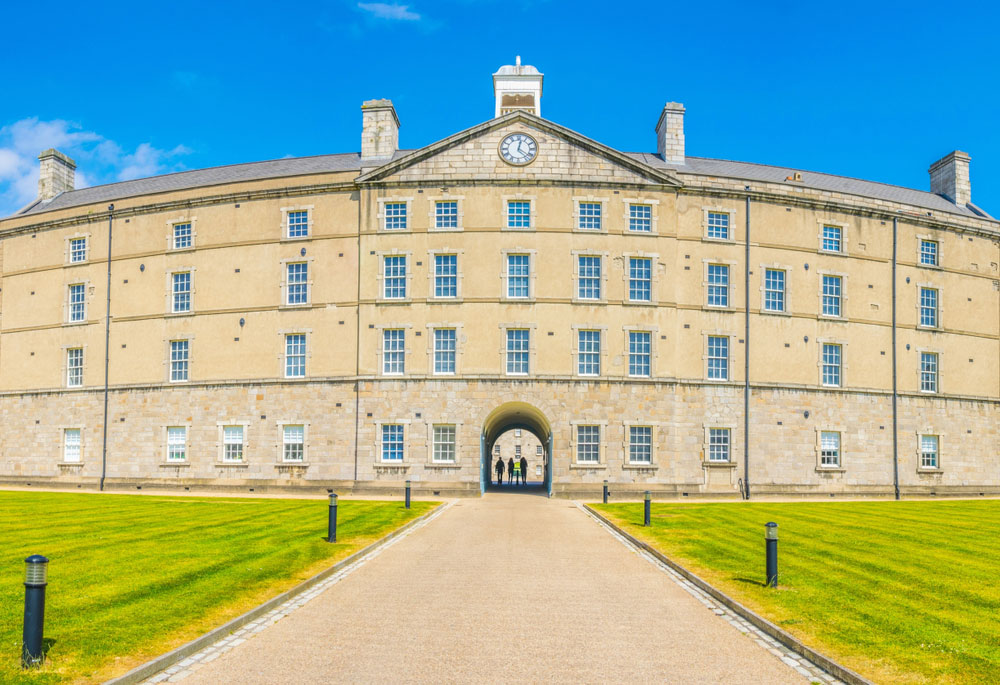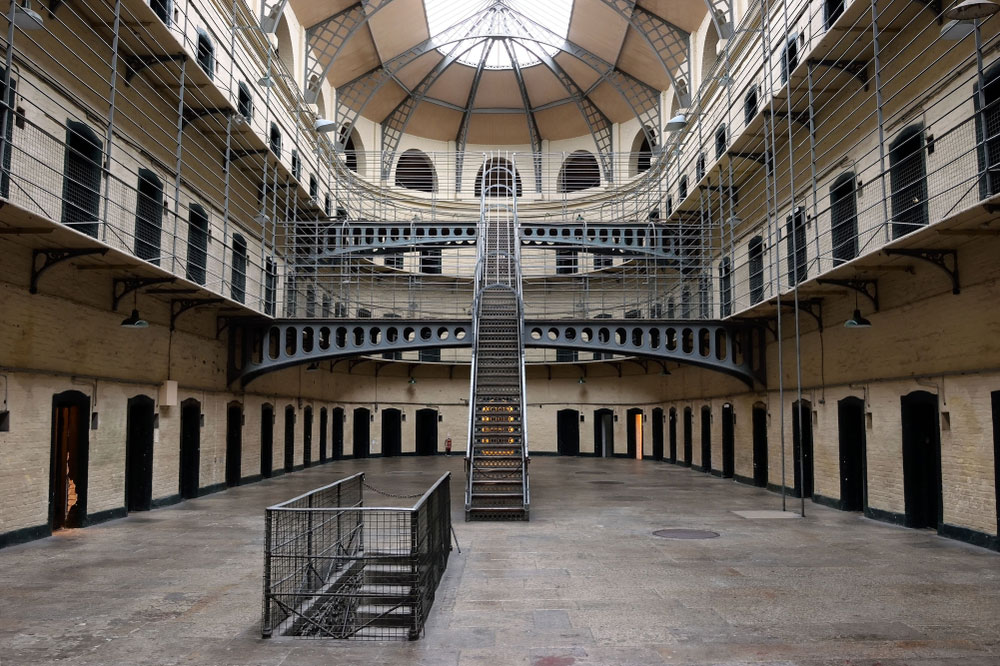For everyone visiting Dublin, the Guinness Storehouse is a must-see destination. It is a seven-story structure in the St. James’s Gate Brewery, which has been manufacturing Guinness beer since 1759. The Storehouse is intended to transport guests through the history and brewing process of this classic Irish beer.
The tour begins on the bottom floor, with a gigantic glass sculpture and an explanation of the brewing process. As visitors progress through the floors, they get immersed in the world of Guinness, learning about the ingredients, the brewing process, and the company’s history.
The ability to drink Guinness right from the source is one of the tour’s attractions. Guests may learn how to pour the ideal pint of Guinness and then enjoy it in the Gravity Bar, which is located on the seventh level and provides panoramic views of Dublin.
The Guinness Storehouse, however, offers more than simply a brewery tour. It also commemorates Irish culture and heritage. The Storehouse exhibits Guinness’ history as a family-owned business and its influence on Dublin, including contributions to local culture and community.
Visitors may explore the numerous exhibitions and interactive displays that bring the Guinness narrative to life during the trip. The Guinness Storehouse has something for everyone, from the massive copper brewing pots to the historic ads and marketing efforts.
Apart from the basic tour, the Guinness Storehouse provides a number of additional experiences, such as beer tastings and food pairings, as well as seminars and courses for anyone interested in learning more about beer and brewing.
Ultimately, a visit to the Guinness Storehouse is a remarkable experience that blends history, culture, and, of course, beer. It demonstrates Guinness’s lasting appeal as well as its position in Irish heritage and identity.

The Origins of Guinness
Guinness’s history began in 1759, when Arthur Guinness, a young entrepreneur, secured a lease on a tiny, derelict brewery at St. James’s Gate in Dublin. The brewery was making ales and porters at the time, but Guinness saw the potential for a new sort of beer—a deeper, roasted malt brew known as Guinness stout.
Guinness gained popularity during the following several decades, particularly among Dublin’s working-class residents. The brewery extended its operations and began exporting beer to other regions of Ireland and abroad.
Guinness became a big employer in Dublin in the nineteenth century, employing over 1,000 people. In addition, the firm built a reputation for quality and innovation by investing in new technology and research to enhance the brewing process.
Guinness began to spread abroad in the early twentieth century, with breweries in England, Nigeria, and other nations. Guinness played an important role in delivering beer to British troops during World War II, and its stout became a symbol of British might and perseverance.
Guinness continued to expand after the war, eventually becoming one of the world’s largest brewers. The firm expanded into other markets, such as food and beverage items, and built a reputation for corporate social responsibility by sponsoring community projects and environmental efforts.
Guinness is now a global brand, sold in over 150 countries worldwide. Despite its size, the firm remains loyal to its Irish heritage, with Guinness brewing still taking place at St. James’s Gate in Dublin. In addition, the corporation promotes Irish culture and history through sponsoring events such as St. Patrick’s Day festivities and supporting Irish arts and music.
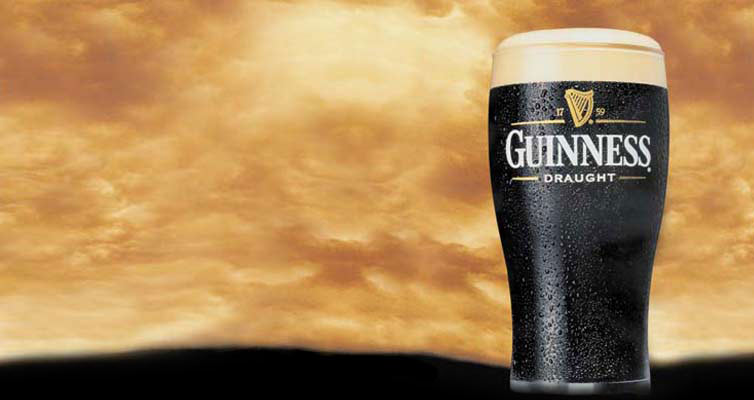
Some Guinness-based meal dishes
Guinness is not only a tasty beer to drink, but it can also be used to enhance the taste and depth of a range of foods. These are a few examples of Guinness-based cuisine recipes:
Guinness Stew: Made with meat, veggies, and, of course, Guinness, this hearty, comforting stew is a traditional Irish dish. The beer gives the stew a deep, malty taste and helps tenderize the meat. The meal is usually accompanied by mashed potatoes or crusty bread. View Our Recipe
Guinness and Cheddar Soup: On a chilly winter day, this creamy, decadent soup is ideal. It’s prepared with sharp cheddar cheese, rich cream, and Guinness, of course. The beer gives the soup a nutty, roasted taste that complements the richness of the cheese and cream.
Guinness Braised Short Ribs: Slow-cooking beef short ribs in a blend of Guinness, beef broth, and aromatics results in this melt-in-your-mouth delicacy. The beer tenderizes the beef and gives the meal a rich, malty taste. Often, the ribs are served with mashed potatoes or roasted veggies. View Our Recipe
Guinness Bread: This rich, hearty bread is ideal for toasting and serving alongside soups and stews. It is flavored with molasses and caraway seeds and is made with Guinness, whole wheat flour, and all-purpose flour. The beer gives the bread a deep, nutty taste and a gorgeous dark hue. View Our Recipe
Chocolate Guinness Cake: A chocolate cake with Guinness in the batter, this sumptuous treat is a chocolate cake with Guinness in the recipe. The beer imparts a slight roasted taste to the cake while also keeping it moist. Traditionally, the cake is iced with a creamy, tangy cream cheese frosting. View Our Recipe
These are just a handful of the numerous delectable recipes that may be prepared using Guinness. Guinness can bring a particular depth of flavor to your food, whether it’s a robust stew, a creamy soup, or a luscious dessert.
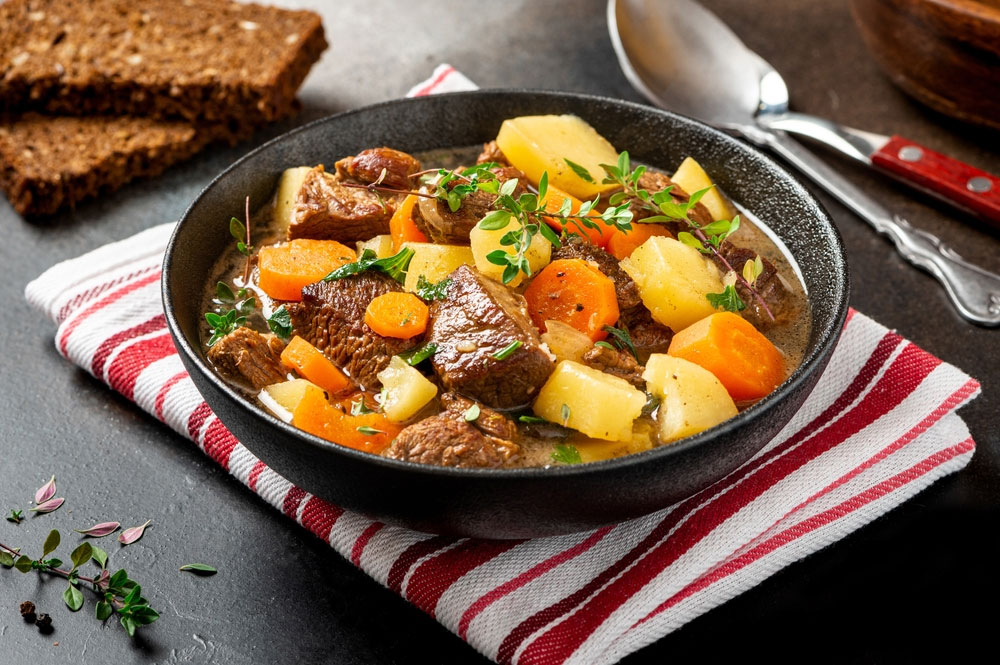
Some Guinness-based cocktail recipes
Guinness is a versatile beer that may be used in a range of hot and cold drink recipes. Here are a couple such examples:
Black Velvet: To make this traditional drink, combine equal parts Guinness and champagne in a tumbler or champagne glass. The rich, creamy stout and effervescent champagne combine to make a delicious, indulgent cocktail.
Guinness Float: On a hot summer day, this dessert-like drink is ideal. Pour a can of Guinness into a large glass and add a dollop of vanilla ice cream on top. The sweet, creamy ice cream balances out the harshness of the stout to create a delectable treat.
Irish Guinness Coffee: Irish whiskey, sugar, and a dab of whipped cream are combined to make this famous hot drink. To create an Irish coffee with Guinness, just replace the hot coffee with hot Guinness and proceed with the recipe as directed. As a consequence, the drink is rich and comforting, with a rush of whiskey and a hint of chocolaty bitterness from the stout.
Guinness Shandy: This cool beverage is ideal for a hot afternoon. Just combine equal parts Guinness and lemonade in a glass and serve over ice. The tart, lemony lemonade and the malty, bitter Guinness combine to make a nicely balanced cocktail.
Guinness Bloody Mary: This twist on the popular brunch beverage is produced by replacing the vodka in a regular Bloody Mary recipe with Guinness. The end product is a spicy, flavorful beverage with a chocolaty bitterness from the stout.
These are just a handful of the numerous delectable beverages that can be prepared using Guinness. There’s a Guinness drink recipe for everyone, whether you like it hot or cold, sweet or savory.
Historical and Cultural Sites
- Trinity College and the Book of Kells – Home to Ireland’s greatest cultural treasure and the stunning Long Room Library.
- Dublin Castle – A historic site with a mix of medieval, Georgian, and Viking influences.
- Kilmainham Gaol – A former prison that played a pivotal role in Irish history, now a museum.
- Christ Church Cathedral – A magnificent medieval cathedral with a crypt and stunning architecture.
- St. Patrick’s Cathedral – Ireland’s largest church, associated with the famous saint.
Museums and Galleries
- National Museum of Ireland – Features exhibits on archaeology, natural history, and decorative arts.
- National Gallery of Ireland – Houses an impressive collection of European and Irish art.
- EPIC The Irish Emigration Museum – An interactive museum dedicated to Irish emigration history.
- Dublin Writers Museum – Celebrating Ireland’s literary heritage with exhibits on famous authors.
- Guinness Storehouse – A must-visit for beer enthusiasts, offering a journey through the history of Guinness.
Parks and Outdoor Spaces
- Phoenix Park – One of the largest city parks in Europe, home to Dublin Zoo and Áras an Uachtaráin (President’s residence).
- St. Stephen’s Green – A Victorian park in the heart of Dublin, perfect for a relaxing stroll.
- Iveagh Gardens – Known as Dublin’s “Secret Garden,” featuring waterfalls, grottos, and rose gardens.
- Bull Island – A UNESCO Biosphere Reserve with walking trails and sandy beaches.
- Howth Cliff Walk – A scenic coastal walk with breathtaking views of the Irish Sea.
Entertainment and Nightlife
- Temple Bar – Dublin’s cultural quarter, buzzing with pubs, restaurants, and live music.
- Grafton Street – A bustling shopping area with street performers and cafes.
- 3Arena – A top venue for concerts and live performances.
- The Abbey Theatre – Ireland’s national theatre, showcasing classic and contemporary plays.
- Croke Park Stadium and GAA Museum – Learn about Gaelic games and enjoy panoramic views from the Skyline tour.
Coastal Attractions
- Dún Laoghaire Harbour – A beautiful coastal area with a promenade, piers, and sailing activities.
- Malahide Castle and Gardens – A medieval castle surrounded by lush gardens and walking trails.
- Dalkey Village and Heritage Centre – A charming village with historical sites and scenic views.
- Portmarnock Beach – A sandy beach perfect for walks, kite surfing, and relaxation.
- Howth Harbour and Market – A picturesque fishing village with a weekend market and seafood restaurants.
Unique Experiences
- Dublin Bay Cruises – Explore the coastline with scenic boat tours.
- Viking Splash Tours – A fun and quirky way to see the city by land and water.
- Jameson Distillery Bow St. – Learn about Irish whiskey and enjoy a tasting session.
- National Leprechaun Museum – Dive into Irish folklore and myths in this interactive museum.
- Ha’penny Bridge – An iconic pedestrian bridge over the River Liffey, perfect for photos.
County Dublin offers a rich blend of history, culture, and modern attractions, making it a vibrant destination for all.
Helpful Resources



